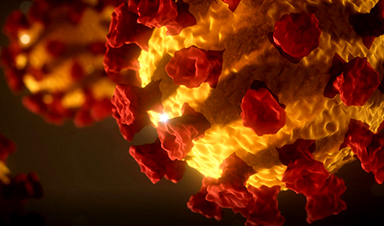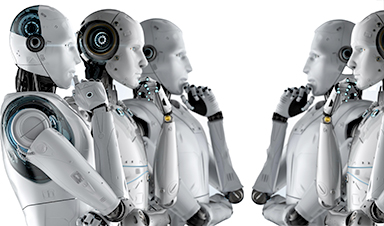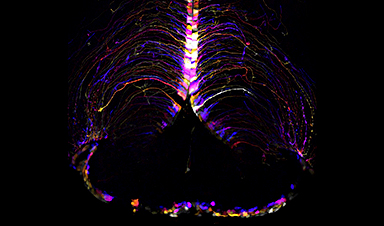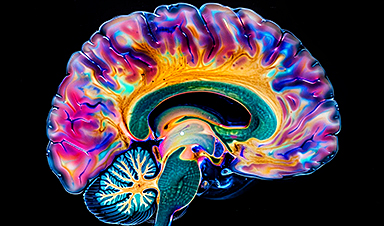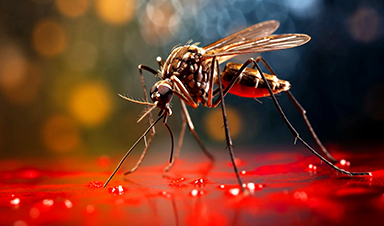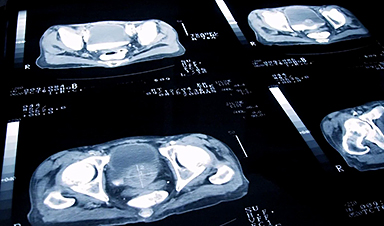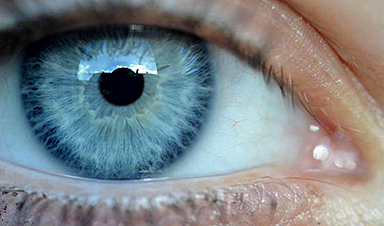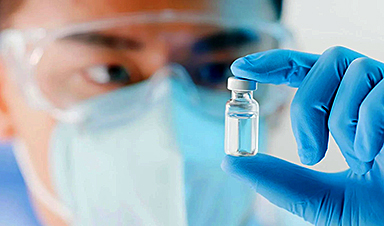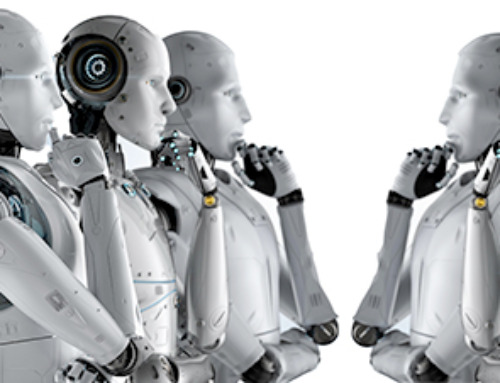When SARS-CoV-2 first began spreading across the globe, not every lab was equipped to study it directly. The virus behind the current pandemic is highly pathogenic and transmissible, leading the US Centers for Disease Control and Prevention to require many of the same biosafety guidelines that shape the study of diseases such as tuberculosis and Ebola.
As in many moments throughout the last year, the scientific community responded by creatively adapting existing tools to the study of COVID-19. Among these, researchers turned to models of the pathogen such as pseudoviruses and chimeric viruses that can be studied safely in labs with lower biosafety level (BSL) clearance than required for studying the wildtype version, in an effort to expand the study of the novel coronavirus. Pseudoviruses don’t replicate, rendering them harmless, but by replacing their surface envelope proteins with those of SARS-CoV-2, researchers can glean insights into the ways the pathogen infects cells. A chimeric virus is made by inserting the genetic material of one virus into the genome of another, safe surrogate, and these introduced sequences are passed on when the virus replicates.
In addition to their safety, pseudoviruses are “extremely versatile in that you can . . . introduce different envelope proteins and you can introduce mutations, which is making it extremely useful for us to screen a lot of different variants,” says Carol Weiss, a virologist who heads the laboratory of immunoregulation at the US Food and Drug Administration. “If you want to introduce mutations in real viruses, it’s a whole lot more work.”
An approximation of the real thing
Pseudoviruses were first developed in the 1960s, after scientists began studying a vesicular stomatitis virus (VSV) isolated from cattle. In addition to replicating well in culture, they later learned that its surface protein, VSV-G, facilitates entry into all eukaryotic cells, making the virus a useful vector not only as a pseudovirus but as a ferry to deliver DNA into cells for therapeutic purposes. The first Ebola vaccine was developed using a VSV platform, and more recently, the virus has been engineered to seek out and destroy cancer cells.
HIV-based platforms, which came about in the 1980s, have since replaced VSV as the most common model for developing both pseudo- and chimeric viruses. Unlike VSV’s negative-strand RNA genome that must be transcribed once inside the cell, HIV’s positive-strand RNA genome can instantly begin translation, making pseudoviruses based on HIV faster to produce. HIV-based model viruses have now been used in many of the same applications as VSV, with scientists applying them to the study of diseases such as AIDS, SARS, MERS, and influenza.
We wanted to really validate that the tool that we generated did appear exactly, with everything we could throw at it, the same way as SARS-CoV-2.
—Sean Whelan, Washington University
To harness these surrogates to study SARS-CoV-2, researchers first needed to prove that their pseudo- and chimeric viruses are viable stand-ins for the real thing. SARS-CoV-2 is a uniquely bulky virus—its genome is roughly 30 kilobases, while HIV and VSV sit around 10 kilobases—and while it is more similar to HIV, none of the three are closely related. Fortunately, both HIV and VSV appear to be compatible for making coronavirus models.
Sean Whelan, a virologist at Washington University in St. Louis, is one of many scientists who has developed a viable chimeric virus platform and quantified its performance in the face of antibodies against the real thing. To do this, he developed two complimentary assays—one for use in infectious disease laboratories with the BSL-3 clearance required to handle live SARS-CoV-2 and another for labs working under a lower, BSL-2 clearance—and studied how each virus responded to a battery of different treatments. It wasn’t enough, he says, to test the viruses’ ability to evade just one type of antibody, so he used monoclonal and polyclonal antibodies and serum from recovered COVID-19 patients—as well as a type of ACE2 decoy protein suggested as a possible therapeutic to draw the virus away from the cells’ own receptor. “We wanted to really validate that the tool that we generated did appear exactly, with everything we could throw at it, the same way as SARS-CoV-2.”
Image Credit: Envato / Amanda Scott
Post by Amanda Scott, NA CEO. Follow her on twitter @tantriclens
Thanks to Heinz V. Hoenen. Follow him on twitter: @HeinzVHoenen
News
False Memories Under Fire: Surprising Science Behind What We Really Recall
New research challenges the ease of implanting false memories, highlighting flaws in the influential “Lost in the Mall” study. By reexamining the data from a previous study, researchers found that many supposed false memories [...]
Born Different? Cambridge Scientists Uncover Innate Sex Differences in Brains
Cambridge researchers found that sex differences in brain structure exist from birth, with males having more white matter and females more grey matter, highlighting early neurodiversity. Research from the Autism Research Centre at the University [...]
New study shows risk factors for dementia – virus causes deposits in the brain
Research into the causes of Alzheimer's is not yet complete. Now a new study shows that head trauma can activate herpes viruses and promote the disease. Frankfurt am Main – As a neurodegenerative disease, [...]
Are Machines Truly Thinking? Modern AI Systems Have Finally Achieved Turing’s Vision
Modern AI systems have fulfilled Turing’s vision of machines that learn and converse like humans, but challenges remain. A new paper highlights concerns about energy consumption and societal inequality while calling for more robust [...]
The Surprising Link Between Smell, Sound, and Emotions
New research reveals how smell and hearing interact in the brain to drive social behavior, using mouse maternal instincts as a model. Imagine you’re at a dinner party, but you can’t smell the food [...]
Brain cells age at different rates
As our body ages, not only joints, bones and muscles wear out, but also our nervous system. Nerve cells die, are no longer fully replaced, and the brain shrinks. "Aging is the most important risk factor [...]
Long COVID Breakthrough: Spike Proteins Persist in Brain for Years
Researchers have discovered that the SARS-CoV-2 spike protein persists in the brain and skull bone marrow for years after infection, potentially leading to chronic inflammation and neurodegenerative diseases. Researchers from Helmholtz Munich and Ludwig-Maximilians-Universität (LMU) have [...]
Water-Resistant Paper Could Revolutionize Packaging and Replace Plastic
A groundbreaking study showcases the creation of sustainable hydrophobic paper, enhanced by cellulose nanofibres and peptides, presenting a biodegradable alternative to petroleum-based materials, with potential uses in packaging and biomedical devices. Researchers aimed to [...]
NIH Scientists Discover Game-Changing Antibodies Against Malaria
Novel antibodies have the potential to pave the way for the next generation of malaria interventions. Researchers at the National Institutes of Health (NIH) have identified a novel class of antibodies that target a previously unexplored region [...]
Surprising Discovery: What If Some Cancer Genes Are Actually Protecting You?
A surprising discovery reveals that a gene previously thought to accelerate esophageal cancer actually helps protect against it initially. This pivotal study could lead to better prediction and prevention strategies tailored to individual genetic [...]
The Cancer Test That Exposes What Conventional Scans Miss
Researchers at UCLA have unveiled startling findings using PSMA-PET imaging that reveal nearly half of patients diagnosed with high-risk prostate cancer might actually have metastases missed by traditional imaging methods. This revelation could profoundly affect future [...]
Pupil size in sleep reveals how memories are processed
Cornell University researchers have found that the pupil is key to understanding how, and when, the brain forms strong, long-lasting memories. By studying mice equipped with brain electrodes and tiny eye-tracking cameras, the researchers [...]
Stanford’s Vaccine Breakthrough Boosts Flu Protection Like Never Before
Stanford Medicine researchers have developed a new method for influenza vaccination that encourages a robust immune response to all four common flu subtypes, potentially increasing the vaccine’s efficacy. In laboratory tests using human tonsil [...]
Water’s Worst Nightmare: The Rise of Superhydrophobic Materials
New materials with near-perfect water repellency offer potential for self-cleaning surfaces in cars and buildings. Scientists from Karlsruhe Institute of Technology (KIT) and the Indian Institute of Technology Guwahati (IITG) have developed a surface [...]
Japanese dentists test drug to help people with missing teeth regrow new ones
Japanese dentists are testing a groundbreaking drug that could enable people with missing teeth to grow new ones, reducing the need for dentures and implants, AFP recently reported. Katsu Takahashi, head of oral surgery at [...]
An AI system has reached human level on a test for ‘general intelligence’
A new artificial intelligence (AI) model has just achieved human-level results on a test designed to measure "general intelligence." On December 20, OpenAI's o3 system scored 85% on the ARC-AGI benchmark, well above the previous AI best [...]
